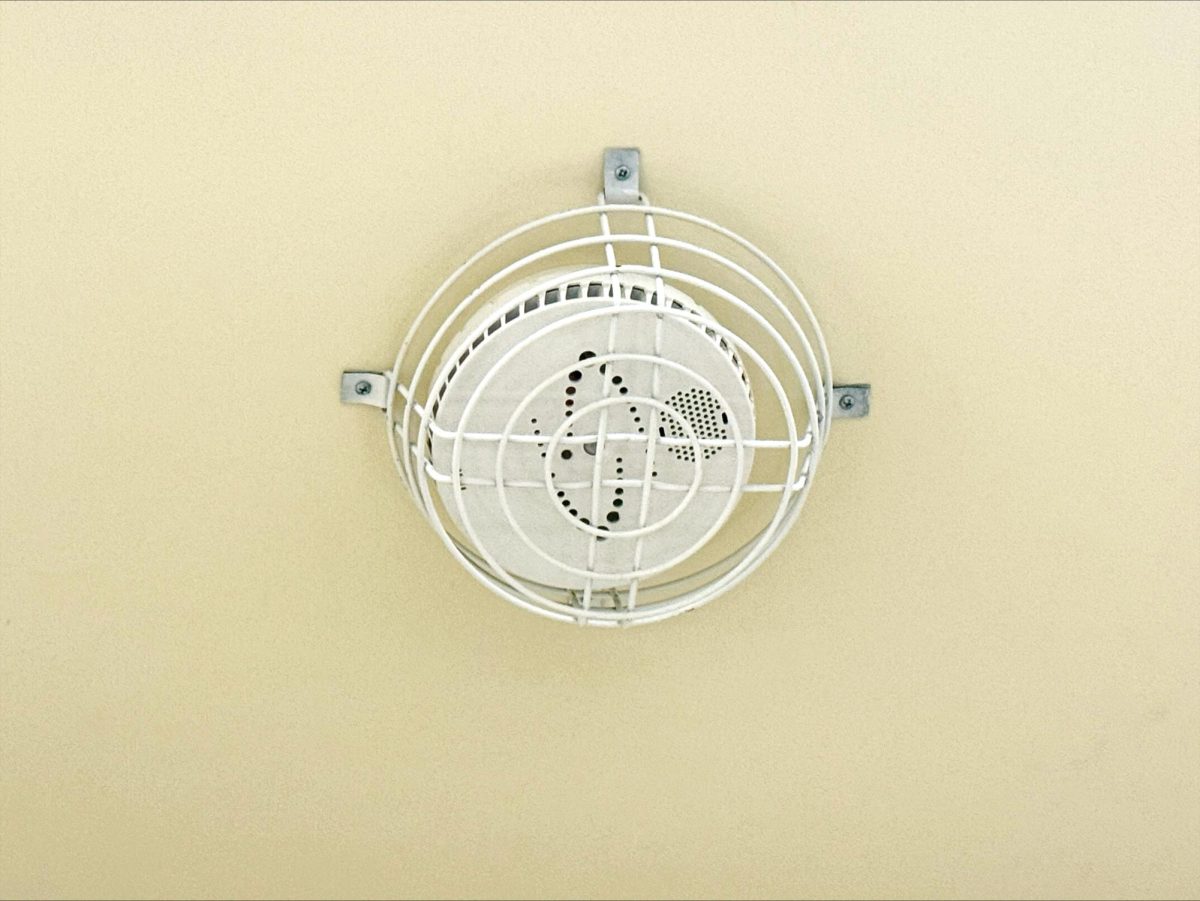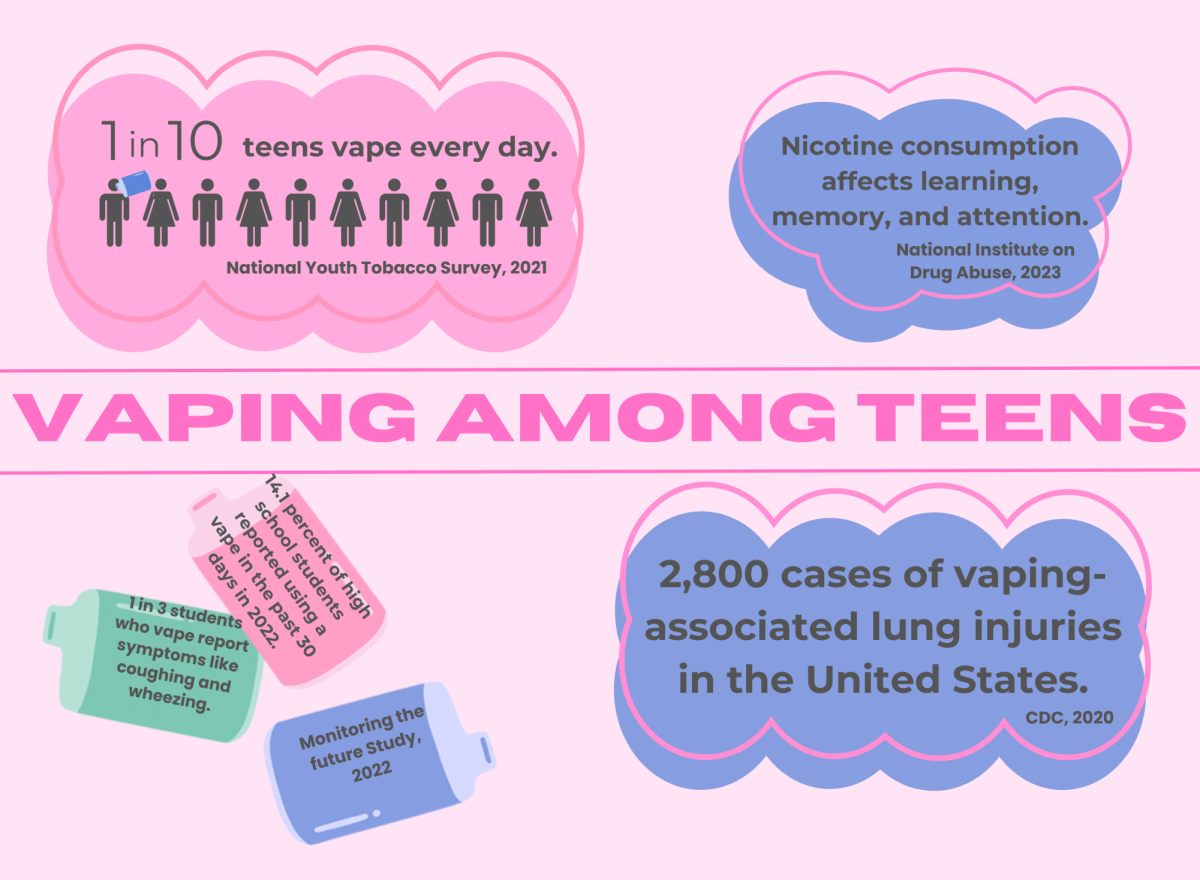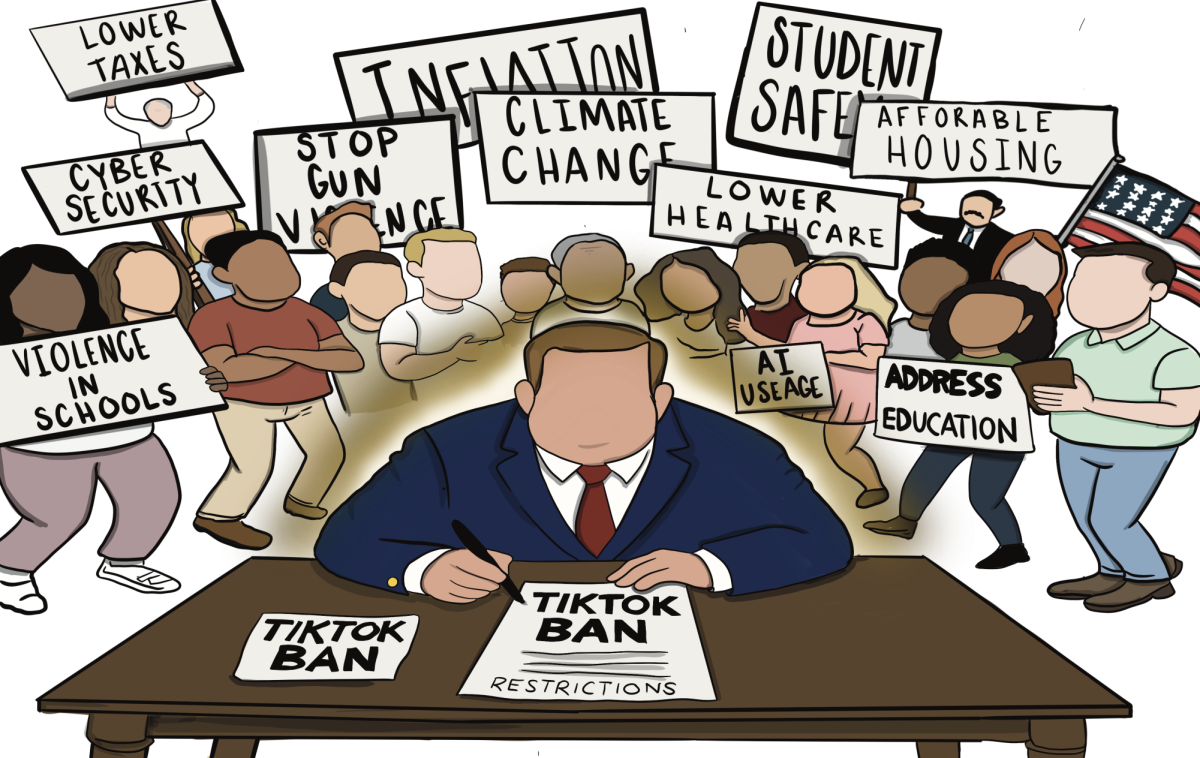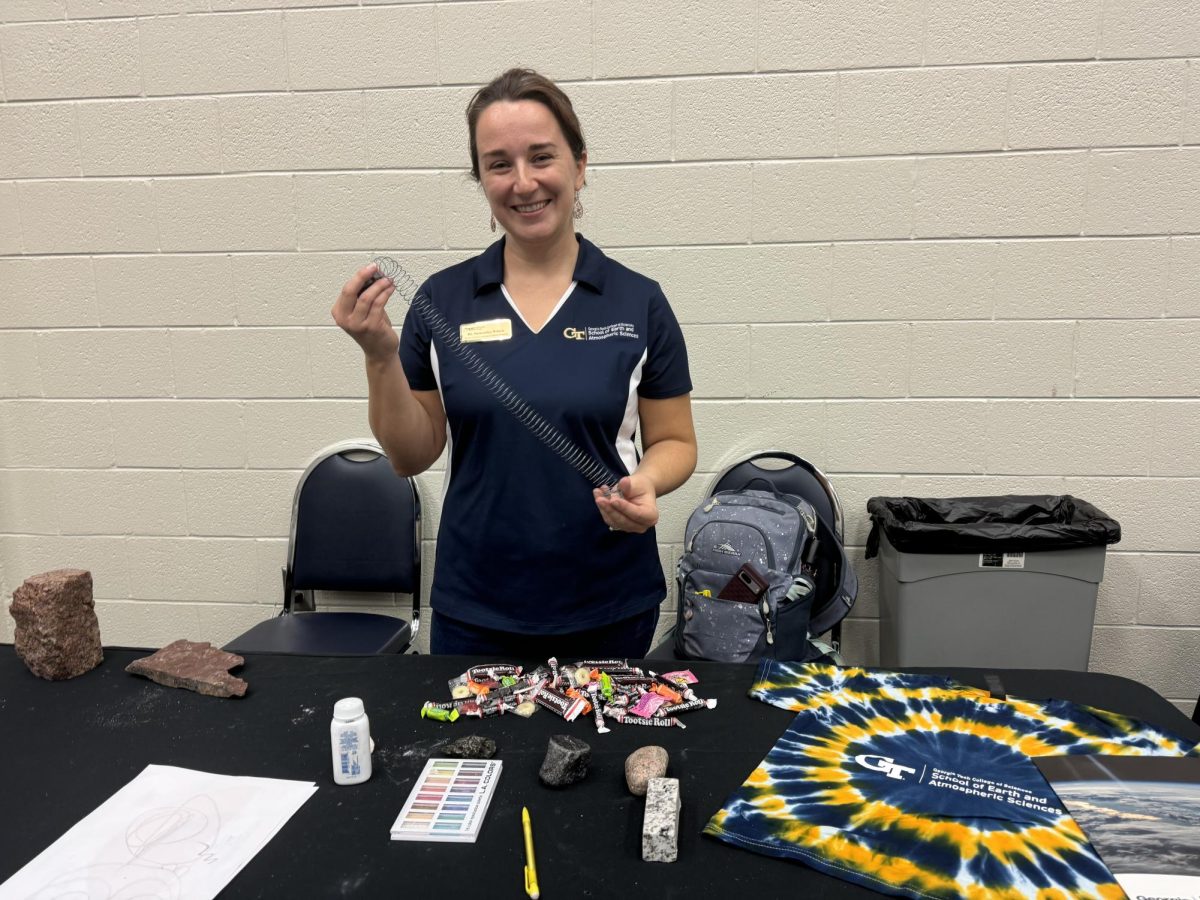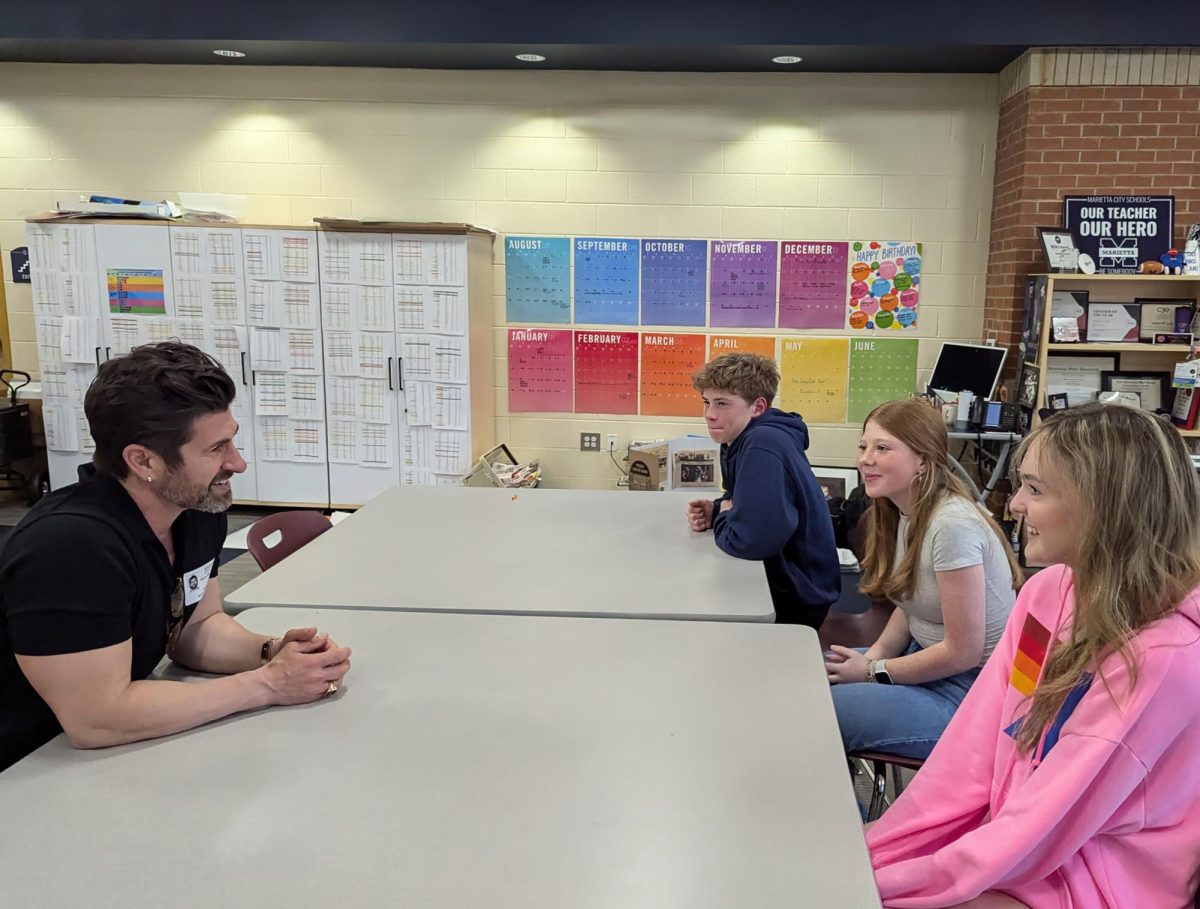Despite widespread worries about the long-term health effects of vaping, the practice has grown in popularity among teenagers in recent years, with many high school students adopting the habit. Public health experts, schools, and parents have taken notice of the out how to handle the risks involved.
Vaping, which involves inhaling and exhaling vapor created by an electronic cigarette or similar device, has become popular among teenagers as a pastime. The Centers for Disease Control and Prevention reports that between 2017 and 2019, high school students’ usage of e-cigarettes increased by about 80 percent. According to the CDC, approximately 14 percent of high school stu-dents reported using e-cigarettes in the previous month in 2023.
The belief that vaping is a safer option than traditional cigarette smoking is one factor contributing to its appeal among teenagers. Since e-cigarettes don’t contain tobacco and don’t emit the same tar and toxins as traditional cigarettes, many young people inaccurately think they are secure. Teenagers who may not have previously considered smoking have found vaping enticing cotton candy, mango, and mint.
E-cigarettes are by no means risk-free, even if they could appear less dangerous than regular cigarettes. There are serious health risks associated with vaping, particularly for teenagers whose bodies and brains are still developing. Teen users are particularly concerned about nicotine, the addictive ingredient included in the majority of e-cigarette products. According to the National Institute on Drug Abuse, adolescent nicotine consumption can affect brain development for an extended period and cause problems with learning, memory, and attention.
“Vaping is hurting Marietta High School’s image. Any time the health and safety of the school comes up in a conversation between students of MHS and of other schools, personal testimonies about the issue of vaping at MHS will be spread 9 times out of 10. It’s a common topic among students of different schools, and the worse the issue of vaping gets at our school, the more other schools hear about it,” Charlotte Common (11) said.
Vaping has been connected to several respiratory issues in addition to its neurological consequences. Formaldehyde, acrolein, and acetaldehyde are among the dangerous compounds found in e-cigarette aerosol that can destroy lung tissue, even though they are often less deadly than cigarette smoke. According to certain research, using e-cigarettes can cause asthma, chronic bronchitis, and other lung conditions. The long-term consequences of breathing in these compounds are also still mostly unknown, which heightens worries about the dangers vaping poses to one’s health.
The problem known as “vaping-associated lung injury” is now recognized as perhaps the most concerning development in the vaping epidemic. Hundreds of teenagers and young adults were hospitalized in 2019 owing to respiratory distress as a result of a sharp in-crease in serious lung sickness cases in the United States that were linked to vaping. The CDC subsequently determined that vitamin E acetate, which is occasionally used as a thickening agent in illicit THC vaping products, was the cause. The risks associated with uncontrolled vaping devices, which can have major and occasionally fatal repercussions, were brought home by this outbreak.
Experts in medicine and public health continue to sound the alarm about the dangers of vaping among teens. Medical experts are particularly worried about the rising prevalence of “dual use,” in which teenagers smoke both traditional and electronic cigarettes. This practice increases the risk of addiction and long-term health issues by exacerbating the harmful health impacts of smoking and vaping.
Schools nationwide are struggling with how to handle the growing problem of vaping among high school students. Many have put in place stringent rules that forbid vaping on school property, while others have adopted a more instructive stance and provided initiatives to increase public knowledge of the risks associated with e-cigarette usage.
Including instruction on vaping in already-existing health curricula is one of the most popular tactics. For instance, classes on the dangers of nicotine addiction and the possible negative health impacts of vaping are now taught in many high schools. Medical experts have even been recruited by certain schools to address vaping.
“Peer pressure has had a large toll on the kids at Marietta. People always tell me that they don’t vape and their friend told them to try it so I know that has had a large effect on the amount of students that vape,” Wendy Trippe, Marietta High School nurse said.
In addition, several schools have made vaping a zero-tolerance policy, treating it the same as smoking to-bacco. When students are found vaping in school, these policies frequently include disciplinary actions like detention or suspension. Although the goal of these policies is to discourage kids from vaping, experts contend that prevention initiatives that prioritize teaching over punishment should be implemented in tandem with them.
Despite these initiatives, vaping is still a major issue at many schools, particularly among students who might believe that the hazards are low or who might be swayed by peer pressure. According to experts, schools should collaborate closely with parents, providing them with tools and assistance to help them comprehend the extent of the issue and how they can support their kids in making healthier decisions.
Teenage vaping is on the rise, which is concerning because it could have both immediate and long-term health effects. E-cigarettes are not risk-free, despite the fact that they are frequently seen as a safer option than smoking. Among the risks connected to vaping are nicotine addiction, lung damage, and mental health problems.
As vaping’s popularity rises, it is critical that communities, parents, and schools collaborate to warn teenagers about the dangers and offer them the assistance they need to make wise choices. People cannot expect to stop the increase in teen vaping and safeguard their health for years to come unless we work together.


